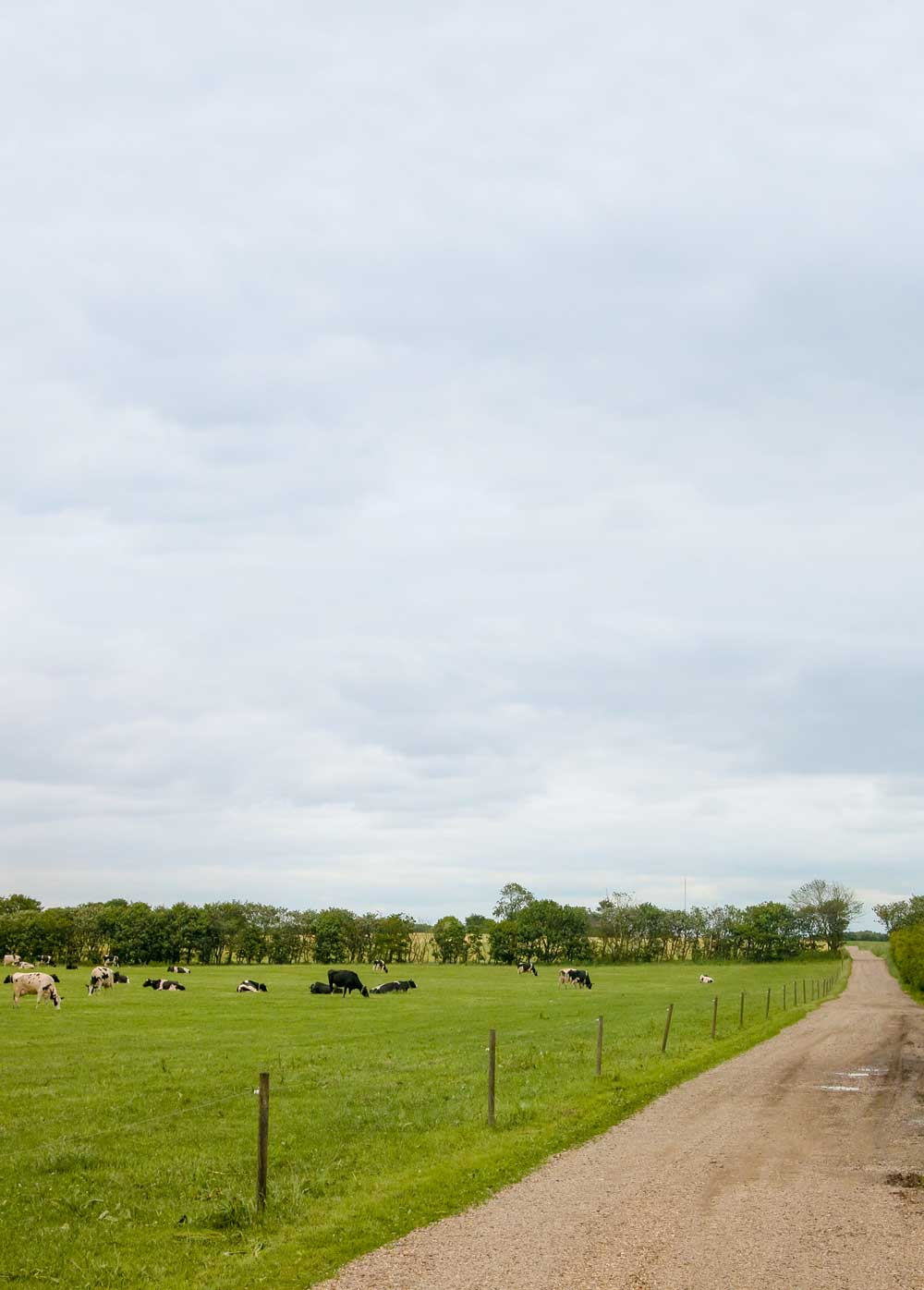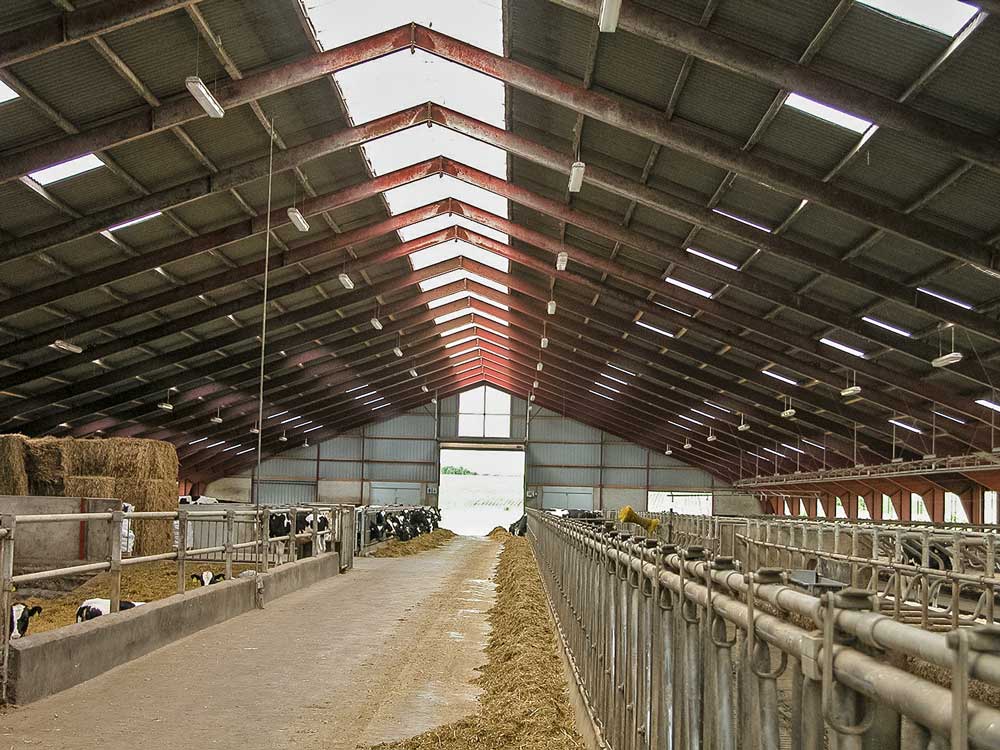Denmark: Dairy expansion beset by limiting factors
By Bianca Fuchs
Limits to Danish dairy farming expansion are not only geographical: high production costs and the capital investments involved also push dairy herd owners almost as far as they can go in terms of performance and efficiency.
Even when starting off in farming, capital requirement for the Danes is high. Straightforward inheritance of a farm is not allowed. The business must be bought by the successor, even if this is a son or daughter. For a dairy farm, the cost currently averages 15,000 to 20,000 € per cow. Family members are permitted one concession: a reduction of 15 % on market value. What’s more, the new farmer must supply 20 % of own capital and before approving a loan many banks look for a minimum return of 8 % for the business.
High costs for farm purchase
In recent years, structural change towards larger farms has been much more marked in Denmark than in many other lands. Throughout the country, the end of milk quotas was often longed for so that production potential could at last be fully exploited. But subsequent expansion ended in liquidity problems for many, and the – sometimes still existing – threat of bankruptcy.
Also faltering just now is the generation changeover. Many farmers are looking for successors outside the immediate family because their children aren’t interested. Discouraging for a start is the almost inescapable heavy burden of debt that must be shouldered. Substantial expansion of farm businesses in recent decades means individual values have soared and there’s not many that want to take that level of debt on – even if banks can be found to supply the required capital. The aftermath of the last financial crisis means these institutes are increasingly wary of risk.
Big businesses, booming performance
The average Danish dairy farm runs 207 cows on 105 ha and so lies relatively far above the respective figures for most European neighbours. Average milk production is also impressive at a very good 11,826 kg Energy Corrected Milk (ECM) per cow.
Another strength of Danish dairy farming is labour efficiency. It’s not rare to find 350 kg ECM/work-hour and area efficiency of over 20,000 kg ECM/ha. However, such performance is also desperately needed: farmland prices, labour costs and other production charges are all very high. For example, the Danes top the European Dairy Farmers (EDF) production cost table with land rental of 500 €/ha. The business results of EDF members may not be representative Denmark-wide, but they do offer a good indication of the financial and production situation in that country. Total production costs average 4000 €/cow, a sum luckily tempered by the high performances of the milking cattle.
High labour costs
Labour costs are also high, at 28 €/h. This encourages farmers to screw-down wage totals, for instance through concentrating on staff for management and cow care, with field operations outsourced. There are also continual efforts to further optimise work procedures; to identify, and then exploit, any hidden reserves for still better efficiency. To this end, very modern equipment is usually standard. Naturally, the increasing size of units also helps increase efficiency.
But the bigger the farm, the more dire the need to hire hands, even although this is expensive. Another problem: willing work power is not that easy to find in Denmark. Apparently, hardly any Danes want to work in agriculture. That’s why the languages heard on in many dairy barns now tend to be Ukrainian, Romanian or likewise.
Legislation for sustainability and environmental care
These two themes play ever-greater roles for Danish farmers, too. Neither do the consumers here differ in awareness of animal welfare concerns. Pressure on milk and meat producers – and on arable farmers – increases in this respect. New plans by the Danish Agriculture and Food Council aim at ensuring the Danish farming sector will be »climate neutral« by 2050. Even now, 50 % of required energy comes from wind power. This movement for more climate protection and sustainability was a central theme in the last Danish parliamentary elections with policies closely following the wishes of the population. While only 14 % of respondents in a 2010 survey found that climate change and sustainability were important themes, this year 46% of respondents were so minded.
Summary
Danish milk producers share many business problems with their counterparts in other European countries. But Denmark also has its »home-made« difficulties, for instance those from mandatory purchase of farms instead of inheritance.
Up until now, the Danish dairy farmer has overcome such challenges through high efficiency and good production performances. But it’s an unfortunate law of nature that the higher the level of performance, the more difficult it is to find further improvements.
Read more on individual strategies: www.dlg.org/en/agriculture/topics/dlg-agrifuture-magazine/knowledge-skills/daenemark-2/
Denmark in EU comparison: increasing milk production, higher consumption
- 3.6 % of EU milk deliveries come from Danish dairy farms. This is 2.7% more than in 2017 when the total was 5.45 m l.
- 2.5 % (2017: 575,000) of all EU dairy cows are milked in Denmark. The national herd has increased steadily since 2014.
- 0.6 % of all EU dairy farms (with more than two cows) are on Danish farmland. Large herds dominate.
- Statistically seen, Denmark produces an annual 940 l of milk per citizen. The EU average is 300 l. Only the Irish beat this figure with 1065 l delivered to processors for every citizen.




